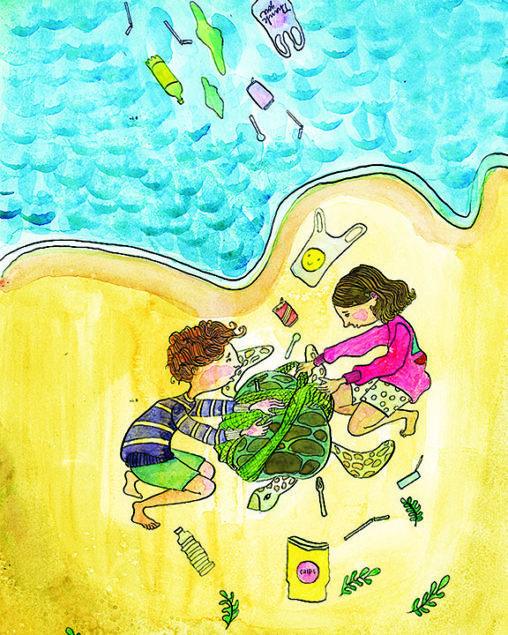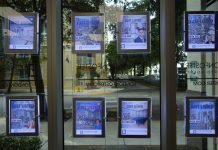
With Christmas fast approaching, my boys scrambled to craft their wish lists: hand-scribbled pleas for remote-controlled cars, dinosaurs, sporting equipment, and video games. Before bed, we finalized their letters to Santa and addressed them to the North Pole. Later that night, after the boys were asleep, I reread their lists and realized that every single item they asked for was made of plastic.
It’s impossible to imagine a life without plastics. Plastic impacts our lives on a daily basis, providing us with everything from food wrappers to lightweight vehicles. Transformed into a pacifier, it soothes us. As a helmet, it protects us. As a life jacket, it saves lives. We now depend on this durable, inexpensive material for survival.
But now, one hundred and fifty years since these synthetic materials were first invented, we are drowning in a sea of plastics.
Because 40 percent of plastic items are single-use products (i.e. used once and then thrown out), scientists estimate that nine million tons of plastic wind up in the ocean every year.
Most marine debris comes from land sources via various waterways. Once in the water, plastics do not biodegrade entirely; instead, they gradually wear away, breaking down into smaller and smaller fragments known as microplastics—bits of plastic only half a centimeter long. Caught in rotating ocean currents called gyres, the debris collects in plastic accumulation zones known as “garbage patches.” The largest of these is the Great Pacific Garbage Patch, which sits between Hawaii and California and is about twice the size of Texas.
In these patches and all over the ocean, marine debris impacts wildlife in numerous ways, including ghost fishing: unmanned fishing nets that float on the ocean’s surface, continuing to entrap sea creatures. Plastic debris with loops—packing straps, six-pack rings, plastic bag handles, etc.—can easily get hooked on wildlife. In the United States alone, more than a hundred marine species are impacted by entanglement, including whales, sea turtles, birds, and sharks.
To make matters worse, many of these creatures mistakenly eat marine debris, particularly when an animal’s natural food (such as algae) clings to the plastic items. The debris occupies their stomachs, giving the impression that they’re full and hindering the animal from consuming proper food. Debris ingestion can lead to internal injury, intestinal blockage, starvation, and even death.
Marine debris is a serious threat to our environment, the economy, and human health—not to mention an eyesore along shorelines around the world. It degrades the beauty of the coastal environment and, in many cases, can lead to economic losses for global tourist destinations. (Take a hint, Miami!)
As I write these words, my boys are “nestled all snug in their beds, while visions of [plastic things] dance in their heads.” Thinking about their future and the plastic apocalypse that lies ahead, I remind myself that marine debris is preventable; even the actions of a few can make a significant difference. So we’re starting simply in our house: We’re asking Santa to fill our Christmas stockings with plastic-free, stainless steel, reusable drinking straws.
Will one less plastic straw save the planet? No, but it’s a start. It’s the kind of easy, inexpensive action that anyone can take. In fact, as my gift to you, here are five actions you can take immediately to make a positive impact:
● Give up plastic bags.
● Skip the straws.
● Pass on plastic bottles.
● Recycle what you can, when you can.
● Never, ever litter.
Let this be your New Year’s resolution: Start with one small action, and work your way up to more monumental modifications to your daily life. Gradually reduce your plastic usage, and in the long run, you will undoubtedly change the world.
Leopoldo Llinas is a forward-thinking father who hopes to educate the young men and woman who will make this world better. He holds a PhD in Marine Biology and Fisheries from the University of Miami Rosenstiel School of Marine and Atmospheric Science. leollinas@gmail.com






